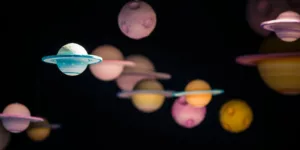Nasa’s Kepler Space Telescope, using gravitational microlensing, might have found evidence of Earth like planets floating in the universe, that are not orbiting a star.
Our observations pointed an elderly, ailing telescope with blurred vision at one the most densely crowded parts of the sky, where there are already thousands of bright stars that vary in brightness, and thousands of asteroids that skim across our field.
From that cacophony, we try to extract tiny, characteristic brightenings caused by planets, and we only have one chance to see a signal before it’s gone. It’s about as easy as looking for the single blink of a firefly in the middle of a motorway, using only a handheld phone.
Iain McDonald, University of Manchester
“Kepler has achieved what it was never designed to do, in providing further tentative evidence for the existence of a population of Earth-mass, free-floating planets,” said Eamonn Kerins, also from the University of Manchester, who was a co-author on the study.
Researchers believe that these planets were first formed around a star before being thrown out of orbit.








